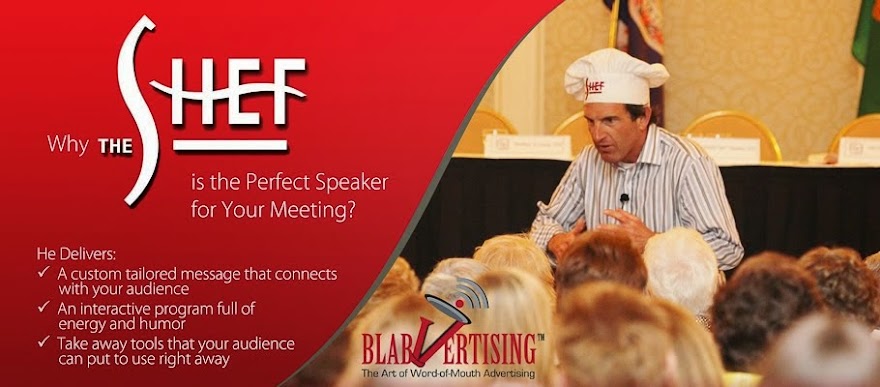A smartly dressed executive steps onto the stage to address his audience. Within five minutes of his opening salvo of “Good morning!” his audience is tuned in…to anything but what this CEO, CFO, or other executive is talking about. Some executives are complete failures when it comes to speaking to group; others captivate their audience’s without breaking a sweat.
Any speaker must be able to convey a message, stir up the audience’s emotions, and paint a clear vision for the future. Do it correctly, and your audience will “buy in” to your message; anything less will disconnect you from an audience quickly. Here are the 7 Deadly Sins of Public Speaking for Executives (and a few tips about how to correct them):
1. Begin your speech with “Good morning, afternoon, or evening”.
The audience does not need to be reminded of what time of day it is. The only thing worse than beginning with “Good morning, afternoon, or evening”, is repeating it in a sing-song type of tone, waiting for your audience to respond. This creates resentment and often builds a wall between the speaker and the audience.
Success Speaking Tip: Your audience will remember the beginning and ending of your speech. Launch immediately with a powerful story to “grab” your audience’s attention
2. Read your speech word-for-word.
When someone loses their place when reads their speech word-for-word, panic and finding their place trumps connecting with their audience. A CEO is not a newscaster reading from a teleprompter! The best speakers touch their audience’s hearts, which is impossible to do when robotically reading something from a card.
Success Speaking Tip: Use bullet points if you require a “memory jogger” to help you stay focused. If you lose your place, a quick glance will often remind you of your place.
3. Journey into PowerPoint hell
Many executives deliver speeches containing slides filled with 100+ words, then read most of the content printed on the slide to the audience. With very rare exception, more than 3 words on any slide will confuse and shift their focus from listening to you to reading a slide.
Speaking Success Tip: Use pictures. People think in pictures, not words. If you think your profession is different…you are wrong. One book that revolutionized my speech preparation is titled, Presentation Secrets of Steve Jobs by Carmine Gallo. Get it.
4. Grip the lectern like your life depended upon it
Some executives hold on to the lectern as if it were a lifesaving piece of driftwood in the middle of a raging flood. When you let go of the lectern, you are able to move with purpose and enjoy a deeper connection with the audience.
Speaking Success Tip: Practice moving with purpose during your speech. Body language integration and animation will not only help you keep your audience’s attention; it will help your speech become more memorable.
5. Ignore the clock
Most CEOs would not tolerate someone who constantly showed up 15 minutes late for meetings. Running over your time slot is the speaker’s version of being tardy. When you exceed your allotted time limit, you are being disrespectful of your audience’s time. It also robs the other speakers of their allotted time slots.
Speaking Success Tip: Practice and time your speech. Remember that audience interaction is necessary and will eat up time. Prepare a speech which is five minutes less than needed.
6. Ummm, ahhh, you know, and other verbal pauses
Most speakers don’t realize that they are using verbal pauses. Imagine ordering a sandwich at a deli and saying, “I am..ummm..Tom…ummm…and I’ll have …ummm…the turkey sandwich…you know….” You look no less ridiculous using verbal pauses during your speech.
Speaking Success Tip: Join a Toastmaster’s group. (To find one near you, visitwww.Toastmasters.org). They are an amazing organization dedicated to helping people improve their communication skills. There is no greater return on investment for helping you improve your speaking skills.
7. End with Q & A
Your audience will remember the beginning and the ending of your program. Even the greatest closing story can be killed quickly by a question and answer session. Think about it, when does a Q & A session conclude? When no one else has anything else to say! This leaves your audience with the impression that there is nothing else interesting about your topic and that you have exhausted all of your knowledge on the subject. It also opens the potential for someone to perform a “mini-speech” about their question, or to drag their question on for 5 minutes.
Speaking Success Tip: If you must include a Q & A, ask for questions ahead of time via email or other promotional means. If you are speaking for a 3-4 hour time slot, ask the audience to submit questions during the mid-session break. You may address the appropriate questions during your program. For other tips, read my previous post, 3 Ways to Become a More Flexible Speaker. This format also allows you to plant the seed with the audience that you have much more information for them than time allowed.
The most effective CEOs and other executives are the most effective communicators. Whether you are addressing an audience of 10 or 10,000; your communication style can act as a catalyst to light the audience on fire, or put them to sleep!
What are your thoughts on executive speaking styles?
For more information about booking The Shef for your next event, visit http://www.theshef.com
or call our offices at 1-563-343-5412

